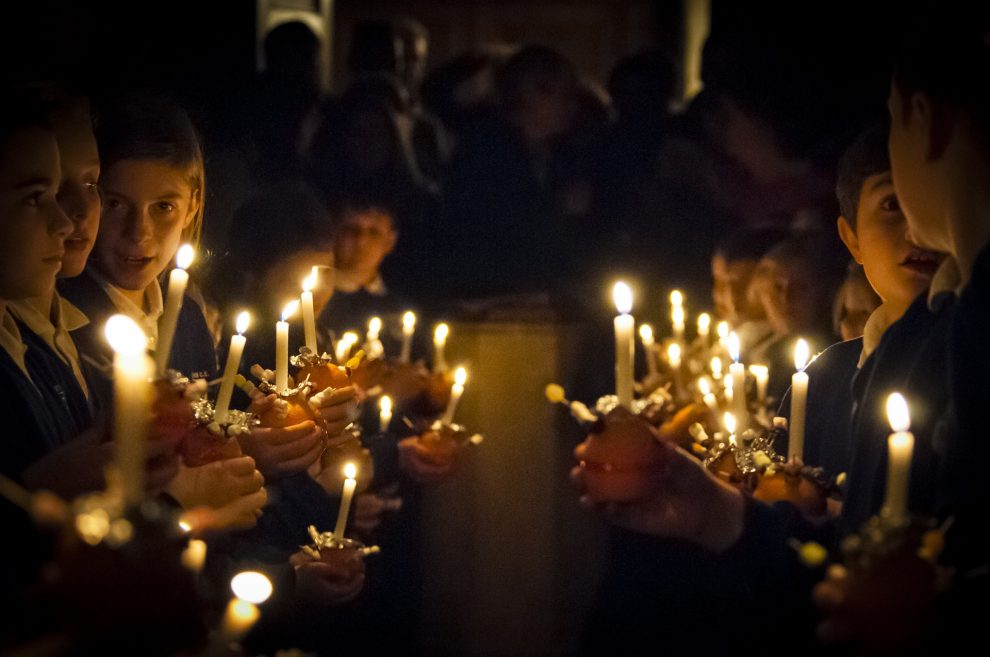There’s no shortage of programs to draw missing Catholics back to church, but few can boast of their efforts in a single diocese as “an increase of 92,000 souls who came home!” Such is the claim of Catholics Come Home, a new evangelization effort first tested in the Diocese of Phoenix and now expanding to 16 others, including my own Archdiocese of Chicago, which hired Catholics Come Home for a holiday TV ad campaign designed to bring back the lapsed.
The local response to the new initiative has been mixed. “What’s changed?” a couple of priests of my acquaintance asked. If people have left because of bad preaching, lackluster liturgies, or the church’s position on X, Y, or Z, they’re not likely to find anything different. At the same time a friend who is a pastor pointed out, there’s no harm in trying.
We Catholics can’t deny we have a retention problem. Recent research shows that 10 percent of the U.S. population is made up of former Catholics, and Catholics Come Home gets credit for seizing the opportunity. But I’m not sure a Fifth Avenue-style media campaign with its accompanying price tag is the way to go, though the package includes training for “first-responder” parish workers such as office staff.
To borrow from my old theology teacher, who borrowed from the late U.S. House Speaker Tip O’Neill: “All church is local.” Research on non-practicers shows that most didn’t leave because of big-picture issues such as the teachings on birth control or sexuality or women’s issues; they just drifted away.
Maybe they had a single bad experience in the confessional, or a local chapter of the clergy sex abuse scandal ushered them out. Or perhaps Mass just didn’t offer any good reasons for the drama of dragging the kids out of bed on Sunday morning. But whatever the problem was, it was on the parish level, and it’s on the parish level that change needs to happen.
Let’s face it: One of the chilliest places in town on Sunday morning can be the local Catholic church. You can go to the same 10 a.m. parish Mass for a month and not have anyone speak to you, while the members of the local Protestant congregation will be competing with each other to hand you a donut. I visited a local Episcopal church one Sunday, and the priest actually offered to meet me for coffee later in the week if I had any questions. I kid you not.
That kind of welcome is rarely on our Catholic radar. But while we may not be able to do anything about the church teachings or policies that make some feel unwanted, we can certainly make sure that anyone who walks through the door knows we’re glad to see them.
Such a welcome of course must include those who feel pushed to the margins by Catholicism, but it also requires a generous attitude toward those pierced and spiky-haired teenagers whose looks of mystical derision perfectly accessorize their non-Sunday best. It means avoiding even the hint of a frown when the storm of toys and breakfast cereal spills over from the young family next to you. And it demands the extra effort of reaching across the boundaries created by skin color, native country, and language.
While we’re at it, five minutes of conversation with the elderly (and lonely) parish gossip can’t hurt, nor can a smile to the self-important parishioner who is about to pounce on you to help with the annual rummage sale. “Welcoming” even those we know sets a tone that visitors catch.
Christmas is just the time to practice that kind of welcome, whether for perfect strangers or less-than-perfect regulars. This is the season we remember the welcome God got from his earthly hosts, both bad (King Herod) and good (shepherds, angels, and astrologers).
Grown-up Jesus got the same mix, though his own shockingly broad invitation included women and children, the disabled and deranged, the maimed and chronically ill, prostitutes and condemned criminals. He encouraged his disciples to keep similar company.
With that kind of example, going out of our way to welcome the Christmas Eve crowds shouldn’t be too difficult. Maybe if we got just that part right, our “retention problem” might solve itself.
This article appeared in the December 2009 issue of U.S. Catholic (Vol. 74, No. 12, page 8).












Add comment